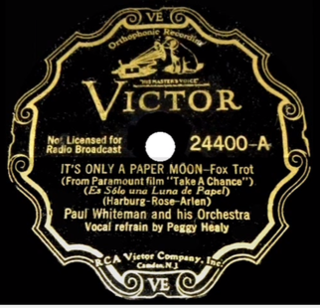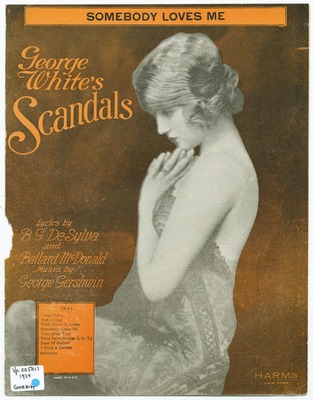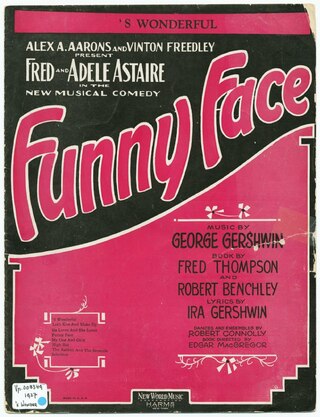| "Night and Day" | |
|---|---|
 | |
| Single by Fred Astaire with Leo Reisman and His Orchestra | |
| B-side | I've Got You On My Mind [1] |
| Published | November 18, 1932 by Harms, Inc., New York [2] |
| Released | January 13, 1933 [1] |
| Recorded | November 22, 1932 take 2 [3] |
| Studio | RCA Victor 24th Street, New York City [3] |
| Venue | both sides from the Broadway musical, "The Gay Divorce" |
| Genre | Popular Music, Musical theatre |
| Length | 3:28 [3] |
| Label | Victor 24193 [1] |
| Songwriter(s) | Cole Porter [2] |
"Night and Day" is a popular song by Cole Porter that was written for the 1932 musical Gay Divorce . It is perhaps Porter's most popular contribution to the Great American Songbook and has been recorded by dozens of musicians. NPR says "within three months of the show's opening, more than 30 artists had recorded the song." [4]
Contents
Fred Astaire introduced "Night and Day" on November 29, 1932, when Gay Divorce opened at the Ethel Barrymore Theatre. [5] A week earlier, at Victor’s Gramercy Recording Studio in Manhattan, he gathered with Leo Reisman and His Orchestra to make a record of two Cole Porter compositions, 'Night and Day' backed with "I've Got You on My Mind". All was done under the dark shadow cast by the 1929 Stock Market Crash, which had spawned the Great Depression, the worst economic disaster in American history. In just over two years, record industry revenues had fallen from $100 million to $6 million, [6] driving all but three companies (RCA Victor, American Record Corporation (ARC) and Columbia) out of business. The single was released as Victor 24193 on January 13, 1933, and it went on to become the top selling record of the year, with 22,811 copies sold. [1]
On May 23, 1933, Astaire recorded it again (due to anti-trust concerns) for Columbia Graphophone Company Ltd., which was now a part of Electric and Musical Industries (EMI). It was released in the United Kingdom in October on Columbia DB 1215, backed with "After You Who?", another Porter composition. Reisman, under contract to RCA Victor, was unable to accompany Astaire on this record. It can be distinguished from the US version because it is fifteen seconds shorter (3:10).
Another Fred Astaire version in circulation is from the soundtrack of the 1934 motion picture, The Gay Divorcee , starring Fred Astaire and Ginger Rogers. After the film opened on October 19, this version was released, and has appeared on record albums over the years. It is almost five minutes long, and Astaire sings and dances for the duration. Astaire is accompanied by Max Steiner and the RKO Radio Studio Orchestra.
The next release was recorded in December 1952, and released the following year in a four LP set called The Astaire Story , which provided an overview of songs Astaire had performed during his career. The musicians included Oscar Peterson and all the songs were fresh recordings. This version of "Night and Day" was over five minutes long.
There are several accounts about the song's origin. One mentions that Porter was inspired by an Islamic prayer when he visited Morocco. [7] Another account says he was inspired by the Moorish architecture of the Alcazar Hotel in Cleveland Heights, Ohio. [8] Others mention that he was inspired by a mosaic in the Mausoleum of Galla Placidia, having visited Ravenna during his honeymoon trip to Italy. [9] [10]
The song was so associated with Porter that when Hollywood filmed his life story in 1946, with Cary Grant, the movie was entitled Night and Day .





